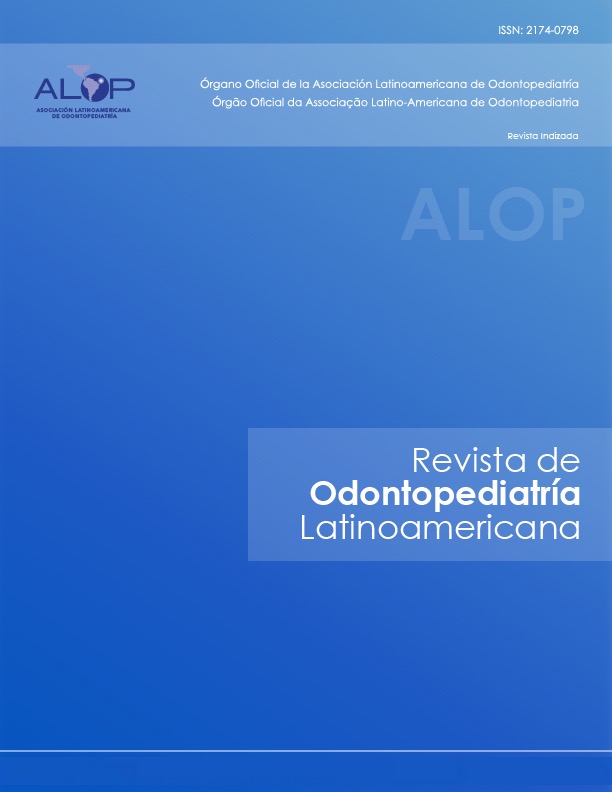Antibacterial efficacy of two mouthwashes (Triclosan and Cetylpyridinium Chloride) against oral Streptococci
DOI:
https://doi.org/10.47990/alop.v2i2.62Keywords:
Mouthrinse, triclosan, cetylpyridinium, streptococciAbstract
The aim of this research was to evaluate the antimicrobial activity of two oral antiseptics against oral streptococcus. A clinical, prospective and longitudinal study was carried out in a sample of 45 patients. Methods: Male and female subjects from 21 to 35 years old were included in this research. They were randomly selected in three groups; group 1 (Cetylpyridinium Chloride), group 2 (Triclosan), and group 3 (Water) as a control. A questionnaire regarding daily oral hygiene habits and an odontogram to determine caries risk was performed before using any mouthrinse. Likewise, saliva was collected with the aim to calculate the initial CFU/ml of oral streptococci. Eventually, saliva samples were collected to count post-rinse CFU/ml of oral streptococci and contrast it with the initial sample. Final results showed that the use of either triclosan or cetylpyridinium chloride reduce significantly the CFU/ml of oral streptococci. The average reduction on the triclosan group was 146,200 CFU/ml whereas it was 113,670 CFU/ml on cetylpyridinium chloride group. Furthermore, a significant association amongst the sort of saliva, the number of decay surfaces, and the initial CFU/ml of oral streptococci was found. (p<0.05) It was concluded under experimental verification that triclosan is more effective than cetylpyridinium chloride. Therefore, as a result a statistical significance between the two mouthwashes was demonstrated.
References
Abello R, Barrientos S. Generalidades sobre la caries dental. [Internet] Centro de Investigaciones Odontológicas 2000; Boletín N°2. Disponible en: http://www.encolombia.com/odontologia/investigaciones/caries.htm
Balda R, Gonzales O. Evaluación del riesgo de caries dental como un proceso infeccioso. Acta Odontológica Venezo- lana 1999; 37(3) Edición Especial.
Bascones A, Mudarra S. Antisépticos en el tratamiento de la enfermedad periodontal. Avances en Periodoncia e Im- plantología 2002; 14(3).
Berrios R, Marrero J. El efecto de los enjuagadores bucales de mayor uso en las bacterias que causan la placa dental. Universidad de Puerto Rico, Recinto de Río Piedras, Facultad de Ciencias Naturales, Departamento de Matemáticas. [Internet]. 2001 [citado Junio 2002].Disponible en: http://www.eduesta.org/materiales/proyectos/Inv99-2000-II-7.pdf
Gaffar A, Nabi N. Recent advances in plaque, gingivitis, tartar and caries prevention technology. Int. Dent. J. 1994; 44, Supl.1.
Gultz J, Kaim J. An in vivo comparison of the antimicrobial activities of three mouthrinses. J Clin. Dent 1998; 9(2).
Lustosa De Castro S, Costa Lima M. Estudo in vivo da eficácia 2 antisépticos sobre microorganismos microaerofílicos da cavidade bucal. [Internet]. Revista dentística online 2001; Año1(2), Janeiro/Março. Disponible en: http://www.ufsm.br/dentísticaonline
Moran J, Addy M, et al. A study to assess the plaque inhibitory activity of a new triclosan mouthrinse formulation. J Clin Periodontol. 2000; 27(11).
Motzfeld R, Linossier A. Prevalencia de caries y de Streptococcus Mutans en alumnos de 1° año Facultad de Odonto- logía de la Universidad de Chile. Rev. Fac. Odontol. Univ. Chile 1996; Vol.14(2) Julio/Diciembre.
Pineda M, Sotomayor J. Aplicación de métodos antisépticos previos al tratamiento odontológico para la reducción de la carga microbiana salival. Odontología Sanmarquina 2000; 1(5). Enero/Junio.
Porcel, M. “Una actitud activa en la atención odontológica. Incorporación de enjuagues antisépticos”. [Internet]. 2001 [citado Junio 2002]. Disponible en: http://www.red-dental.com/tranotas.htm
Stella Maimone. Triclosán y Gluconato de Clorhexidina. Visión 1998; 2(4).
Downloads
Published
Issue
Section
License
Copyright (c) 2012 Latin American Pediatric Dentistry Journal

This work is licensed under a Creative Commons Attribution-NonCommercial-ShareAlike 4.0 International License.























